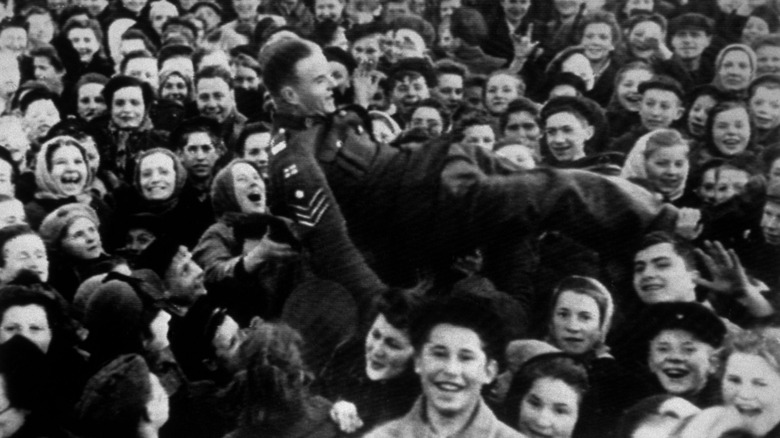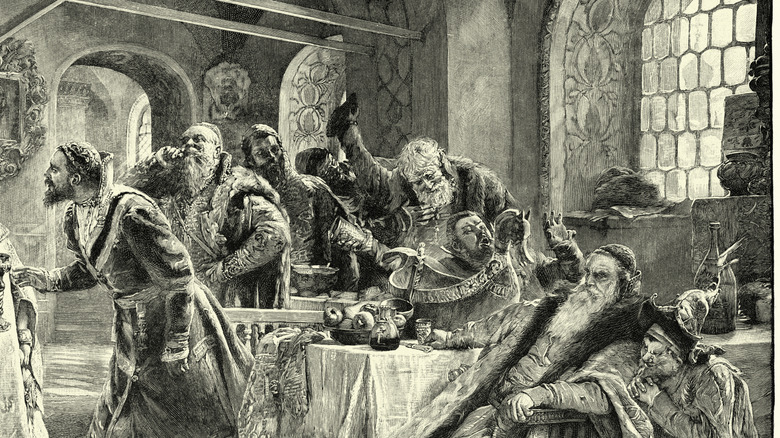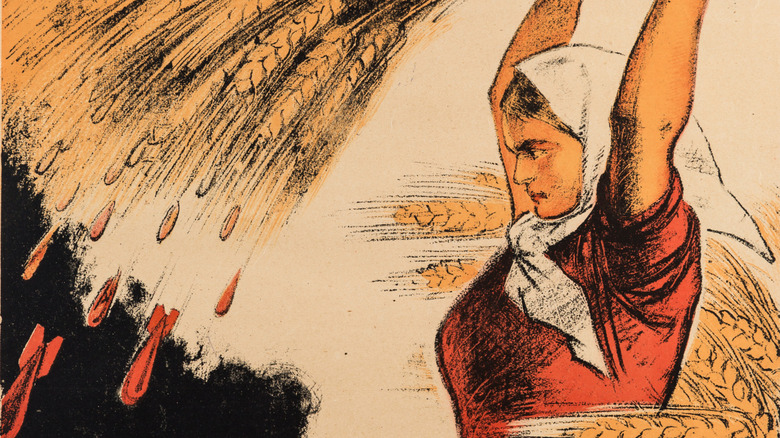How The Entirety Of Russia Once Ran Out Of Vodka In Less Than 24 Hours
The long-awaited news finally came a little past 1 a.m. on May 9, 1945, via Radio Moscow. Announcer Yuri Levitan told listeners that Nazi Germany had surrendered two days earlier (the Soviet leader Joseph Stalin delayed releasing the news until satisfied the surrender had been ratified). Moscow's residents instantly burst into celebration, whether clothed or in pajamas, and the vodka began to flow. And flow. And flow. It was a celebration like no other across Russia.
The Soviets had suffered immensely at the hands of the Nazis. Among these tribulations was the years-long siege of Leningrad, one of the most important battles of World War II, that resulted in the death of at least 800,000 civilians. In total, the Soviet Union lost 27 million people, including 19 million civilians. The outpouring of joy and the intake of vodka at the news of the Nazi surrender continued well into the next day, and less than 24 hours after the party started, the entire country had finished every last available drop of the spirit. This impressive feat seems like something only Russians could have accomplished. After all, they have had (and continue to have) a long relationship with vodka.
Russia's long relationship to vodka
Russia and vodka have become synonymous. This quote from the Vodka History Museum in Moscow succinctly sums it up: "There is hardly a person in the multilingual world that surrounds us who, if Russia is mentioned to him, will not think of vodka." This isn't even the only museum in Russia dedicated to the spirit. There's a much larger one in St. Petersburg called the Museum of Russian National Drink. While vodka was likely born in Poland, by the 13th century, the Russians had adopted it as their own, with the government soon turning its production into a vital part of its budget. Tsar Ivan III, in 1472, created the first state monopoly on vodka production.
The last tsar, Nicholas II, banned the sale of vodka in 1914, resulting in a loss of state revenue, widespread anger, and vitally important grain being used by Russians to make moonshine. Through the years, this push and pull between state control of vodka production and its prohibition continued. When Joseph Stalin came to power in the 1920s, he placed it back in governmental hands. It soon represented 20% of the state's revenue.
Vodka was still being made during World War II
In the 1930s, during one of several devastating famines, Joseph Stalin, one of the most cold-blooded rulers in history, pushed to ramp up vodka production using the grains and potatoes his people needed to survive. Vodka production continued during World War II, with Soviet troops receiving a daily ration of vodka. Perhaps the later Soviet leader Mikhail Gorbachev should have taken a page from Stalin's book, since when he curtailed the availability of vodka in 1985, a group of Russian soldiers traded their tank for two cases of vodka, per The New York Times.
So, while there was vodka available in Russia during World War II when VE Day came, it was less than what would have typically been available. Still, draining the country's vodka reserves in less than a day is a jaw-dropping accomplishment. A few weeks later, Stalin held a victory celebration at the Kremlin where he and his underlings toasted to their victory over Nazi Germany. They seemed to have all the vodka they could drink.


